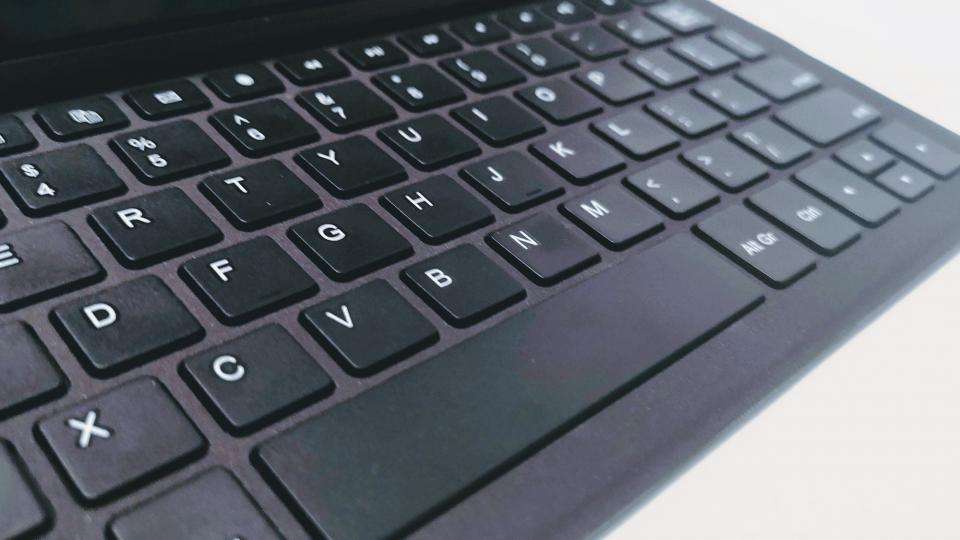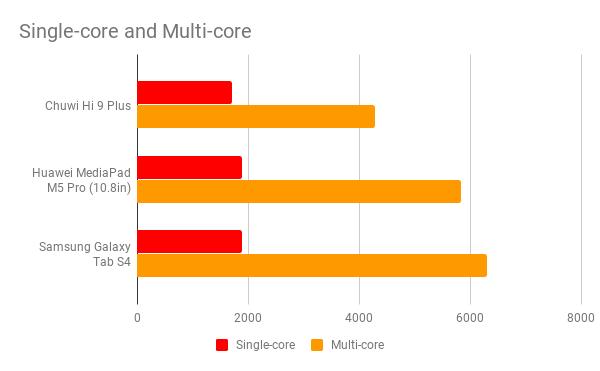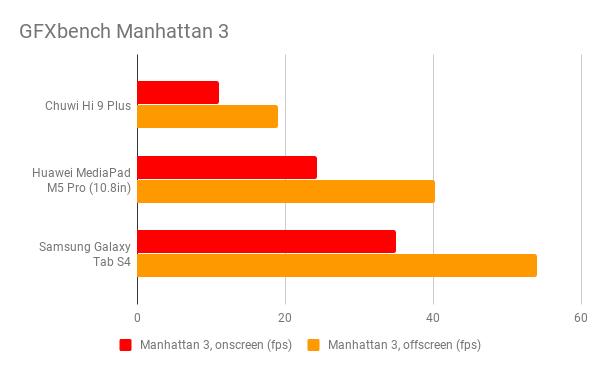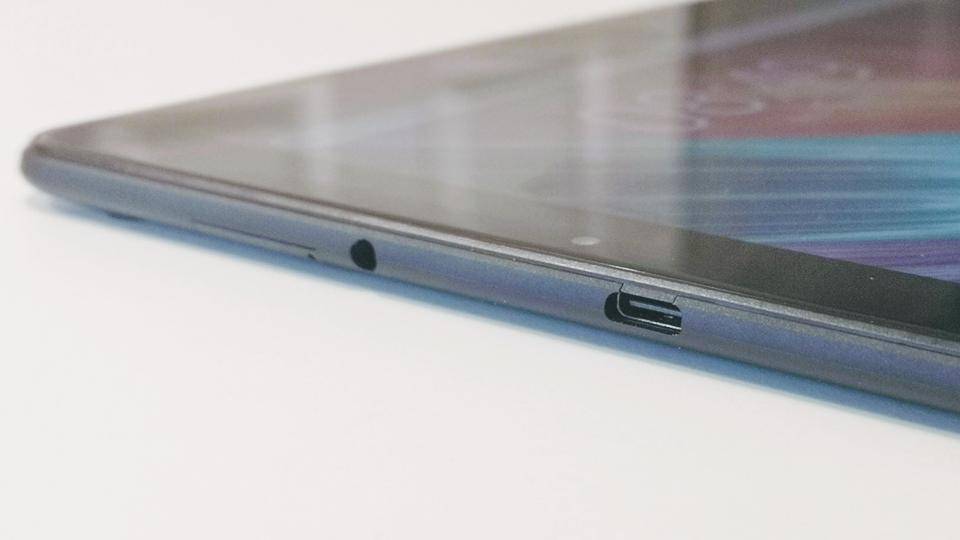With tablet sales declining, manufacturers are increasingly trying to pitch their slabs as alternatives to laptops. Apple, Samsung and Huawei are all trying the same trick and chasing the “productivity” customer with varying degrees of success. The latest to cross my path is the Chuwi Hi9 Plus, a budget rival to Huawei’s MediaPad M5 Pro.
Chuwi Hi9 Plus review: Price and competition
Huawei’s productivity tablet is one of the more affordable options in the category. With a 10.8in tablet with a 2,560 x 1,600 resolution IPS display, a bundled pressure-sensitive stylus, folio keyboard and 4G cellular connectivity, it offers a lot of capability for around £500.
The Chuwi Hi9 Plus is even less expensive, delivering a very similar bundle for around £215. That’s the price from Chuwi’s official AliExpress store at the time of writing. Yes, we are talking about buying directly from China, but a near 50% saving over the competition may make this a hurdle worth jumping.
Buy the Chuwi Hi9 Plus from AliExpress
Chuwi Hi9 Plus review: Design and display
Physically, the black Hi9 Plus is a rather generic-looking device. But you could say the same of most tablets, including the MediaPad M5 Pro. Only the logo and fingerprint scanner on the latter immediately set them apart.
At 267 x 177 x 8.4mm (WDH), the Chuwi is 6mm taller and wider than the Huawei and, at 550g, some 52g heavier. The extra 0.9mm thickness is hardly worth mentioning.
The overall build quality belies the price. The back of the tablet may be plastic and a bit of a fingerprint magnet, but the whole thing feels reassuringly solid. The rounded edges make the slab comfortable to hold and the chrome band that oddly only runs around three of the four sides adds a dash of style.
The display on the Hi9 Plus uses the same IPS technology, is the same size and aspect ratio (10.8in, 16:10) and boasts the same resolution and 280ppi pixel density as the MediaPad. This display occupies 72% of the front of the tablet, compared with 76% on the Huawei.

I’m not sure what sort of glass the screen is covered with, but there was a factory-applied screen protector in place when I first extracted the tablet from its box. I removed that because I prefer the feel of glass to plastic. Only time will tell if this was a wise move.
Technically, the Hi9 Plus’s display ticks all the right boxes. The maximum brightness of 405cd/m ² is more than acceptable and it covers 85.2% of the sRGB colour gamut, which ensures that colours are reasonably vibrant. The contrast ratio of 1,423:1 is by no means disgraceful either. Viewing angles are robust.
Chuwi Hi9 Plus review: Connectivity and performance
Chuwi offers 64GB of storage as standard but you can boost that with a microSD card of up to 128GB capacity. The memory card occupies a slot on the same tray as the two 4G micro-SIM cards. Getting all three in place and then sliding the caddy home can be a tricky business.
That the Hi9 Plus boasts dual 4G cellular connectivity to back up the 802.11ac Wi-Fi radio is impressive at the price, though. And don’t worry about the Hi9’s Chinese provenance hampering 4G connectivity, either: it supports bands 1, 2, 3, 5, 7, 8, 20 and 40. Thanks to the cellular connectivity, it’s possible to use the HiPlus 9 to make regular phone calls as well as to send and receive SMS and WhatsApp messages and browse the web.
Powering the Hi9 Plus is a MediaTek MTK6797X Helio X27 tri-cluster SoC. With two Cortex-A72 cores running at 2.6GHz, four A53s running at 2.0GHz and another four running at 1.6GHz, all backed by 4GB of RAM, it’s a solid enough performer. The octa-core Kirin 960 SoC inside the MediaPad M5 is more powerful, but not by enough to make any noticeable difference to the end user.


For a real-world test, I installed all of Microsoft's Office apps then loaded up some hefty documents and spreadsheets in Word, Excel and PowerPoint while running half a dozen Chrome tabs and flipping back and forth to Netflix. The Hi9 kept everything moving fluidly and skipped between apps with alacrity.
The performance of the Mali T880 GPU is rather less impressive on paper, but titles such as Shadowgun , Real Racing 3 and Modern Combat 5 all ran perfectly well, which just goes to show you shouldn't put too much store in synthetic benchmark scores.
At this point it's worth stating that, because it has a MediaTek processor and hails from a small Chinese maker, the odds of the Hi9 Plus getting an Android 9 update are remote, to say the least. Buy it expecting to be stuck with Oreo for the duration.

Chuwi Hi9 PLus review: Keyboard, stylus and physical layout
The bundled keyboard is not at all bad. The keys have a very positive, if rather shallow, action and are of a good size. I was quickly up to my usual typing speed. The keyboard has an international layout, though, which means you have to play hunt the “£” sign (it’s Shift+3). A small niggle that’s easily counterbalanced through the use of shortcuts.
The tablet and keyboard dock by means of a pogo connector and two very strong magnetic lugs. Once connected, everything stays upright and stable , although I found the one-position elevation is a little too close to vertical for comfortable use.
Chuwi has given careful thought to the placement of the Hi9’s controls and connectors. The USB Type-C and 3.5mm headphone jack are on the left (when docked in landscape), the former lower than the latter so any attached expansion docks don’t dangle annoyingly. For reasons beyond my understanding, the MediaPad M5 Pro doesn't have a 3.5mm audio connection so that's a big tick in the Hi9 Plus's favour.
The plastic power and volume buttons are situated at top left – again, they're easy to find and difficult to obstruct. The loudspeakers are at the rear near the top. As a design, not only does it work well with the bundled keyboard but also perfectly with my trusty Logitech K480 Bluetooth keyboard.
Chuwi Hi9 Plus review: Sound, keyboard and stylus
Where the Hi9 Plus falls down is sound quality. Most Chuwi devices have speakers that at best can be described as mediocre but the pair fitted to the Hi9 are more dismal than usual. They’re tinny, lack bass and sound harsh at full volume.
The Hi9 Plus runs a stock version of Android 8 Oreo with only a basic file manager adding to the usual Google apps. This contrasts strongly with the Huawei MediaPad’s heavily skinned version of Android, which includes an optional “Desktop” mode imitating a Windows or Linux environment.
It’s the same desktop implementation Huawei bundles with its flagship phones such as my own P20 Pro and, while it’s an interesting idea, it’s not something I’d describe as a must-have. If I want to work in a windowed environment, I use my Ubuntu laptop.
The same could be said of the trackpad that features on the Huawei MediaPad’s keyboard. I can’t say I’ve ever missed a trackpad while using a physical keyboard with an Android or iOS tablet so can’t really criticise the absence of one on the Chuwi Hi9’s keyboard.
Disappointingly, the keyboard doesn’t wrap all the way the around the tablet when folded away. The actual keyboard deck folds over on itself then rests against the screen, leaving the back of the tablet exposed. There’s nowhere to house the stylus, so I can see that going walkabout in short order.
If you fancy a more protective keyboard, the Hi9 Plus can be purchased on its own for around £180 so, even if you add in the price of something such as Logitech’s swish Universal Folio at £60, you are still ahead of the deal.
Chuwi’s battery-powered HiPen3 is a rather basic affair. It lacks some advanced features such as tilt-detection and only supports 1,024 levels of pressure to the Huawei M-Pen’s 4,096, but for most users, I suspect it will do a perfectly reasonable job. I certainly had no complaints after sketching, scribbling and doodling with it on the Hi9 Plus using ArtFlow and ibis Paint X.
Subjected to the usual Expert Reviews battery test, the Hi9 Plus coughed and died after 10hrs 15mins. That’s 1hr 34mins less than the MediaPad 5 Pro managed, but the Chuwi’s battery is smaller, at 7,000mAh versus 7,500mAh. For a 10in tablet that's par for the course.
Of course, those numbers only apply when you have the 4G SIMs disabled. Start leaving your tablet hooked up to a cellular network and you can chop 20% or more off your battery life. Sadly, there’s no support for MediaTek's Pump Express fast charging in the Hi9 Plus, with the bundled two amp, two-prong charger taking anything up to four hours to fully recharge the battery.
Chuwi 9 Plus review: Cameras
The Hi9’s cameras are nothing to write home about, either. Despite boasting decent 8MP sensors on paper, the results – especially from the rear camera – are poor. Images look washed out, fuzzy and dull. Engaging HDR does little to address matters.
The front-facing camera is adequate for video chats, but the camera itself is positioned to be top-centre in portrait rather than landscape. So, when the tablet is docked, you look off-centre to callers. The Huawei MediaPad’s camera is placed centrally on the long axis.
Chuwi Hi9 Plus review: Verdict
Before I wrap up, I must highlight one issue I came across. On a couple of occasions, the physical keyboard stopped working – as did the virtual keyboard. Detaching and reattaching the keyboard had no effect. Only rebooting the tablet fixed things. In my experience, such minor bugs are not uncommon when buying from smaller Chinese brands.
So, is the Chuwi Hi9 Plus as rounded a product as the Huawei MediaPad M5 Pro? Not quite. The poor quality speakers and cameras count against it and, while the keyboard performs well for typing, it falls short as a protective cover. The stylus can’t quite match the Huawei alternative, either. That said, you are paying half the price of the MediaPad and, in that context, the Chuwi Hi9 Plus is very good value for money.